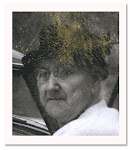Take a step back in time to China in 1926.

Click on image to see it larger.
It's interesting how much information the person wrote on the front of the photo. I'm glad they did, otherwise I'd have never known anything about this shot.
Haikou/Haikow, China in 1926 looks nothing like the modern city you can find in images on Google.
The hanzi characters comprising the city's name, 海口, mean ocean/sea and mouth/port, respectively. Thus, the name "Haikou" is also a word for "seaport". Haikou originally served as the port for Qiongshan, the ancient administrative capital of Hainan island, located some 5 kilometres (3.1 mi) inland to the south east. During its early history Haikou was a part of Guangdong province. In the 13th century it was fortified and became a military post under the Ming dynasty (1368–1644). The port is located west of the mouth of the Nandu River, Hainan's principal river. When Qiongshan was opened to foreign trade under the Treaty of Tianjin in 1858, Haikou started to rival the old administrative city. In 1926, Haikou overtook Qiongshan in population and it was declared a separate administrative city. Haikou was developed as a port during the Sino-Japanese War (1937–45) when the Japanese invaded and occupied Hainan Island from early 1939 to 1945.
Since 1949, Haikou has maintained its position as Hainan's main port, handling more than half of the island's total trade. It has replaced Qiongshan as the island's administrative capital. In 1988, Haikou was made a prefecture-level city as well as the capital of the newly-created Hainan Province.
Haikou old town contains the oldest buildings in the city and was largely built by wealthy Chinese from the mainland and some overseas Chinese who had returned to their homeland. The houses are a mixture of styles including Portuguese, French, and Southeast Asian. The streets used to be divided into different areas selling Chinese and western medicine, for silk and bespoke clothes, one for fresh fish and meat, and others for the sale of incense, candles, paper, ink, and other goods.
Various projects are currently under discussion to decide the best way to restore and preserve these historical buildings. (SOURCE: Wikipedia)

















Stepping back and learning, that's one of the main reasons I like Sepia Saturday and follow the bloggers like yourself. So much to know and be the better for knowing!
ReplyDeleteI wish I'd d made this a Sepia Saturday post, but I don't have the bandwidth to participate.
DeleteI would have been even gladder if they'd written on the back, rather than the front. I've always fancied sailing somewhere on a junk, but haven't had the chance, yet. For now I can do so vicariously through your photos, thank you.
ReplyDeleteNormally I'd agree, but in this case a bit of a story is told. Eventually this person was going to be in Hawaii. I got that from the upper right corner. Plus all of this can be easily Photoshopped out. If they'd written across the entire back the details would have been damaged. The person chose the "empty" areas to write. So in this case it doesn't really bother me.
Delete